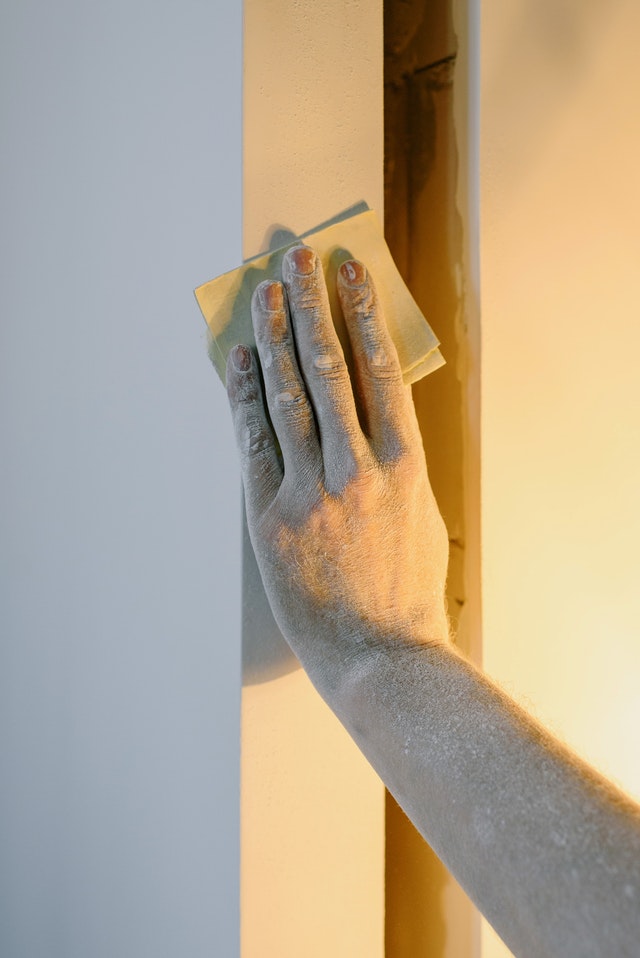Find out about the many distinct grit types and grades so that you can use the appropriate sanding products for each project.
If you’ve ever worked with wood, you’re probably familiar with the notion of sanding all edges after cutting: Always before a finish, between coats of paint, and so on. Sanding pads may appear simple enough to check off on a tool and material list until you go to the hardware store and find stacks of sheets and booklets each with its own set of numbers or sandpaper grits.
Sandpaper grades vary greatly, and if you’re just getting started, picking the correct grit might be tough. Warm-up with these fundamental tips and guidelines of thumb to get you started. This article will walk you through:
- It’s critical to get the appropriate sandpaper grade.
- Choosing the appropriate coarseness for a task.
- Considering the best kind of grit to choose.
Sizing Sandpaper Grit
Sandpaper is made of tiny particles from natural or man-made sources, rather than sand. The grains (also known as grit) are filtered, sized, and gathered before being sewn to a paper, sponge, or cloth-type backing to create an abrasive substance that can be used in a variety of DIY projects.
- Sandpaper has very fine grains when compared to other abrasives. The finer the sandpaper grit, the smaller the grains are and the more finely ground your sandpaper is.
- A lower value indicates finer sandpaper, while a higher score implies larger grains and rougher sandpaper.
Choosing the Right Coarseness
Extra coarse sandpaper
Sandpaper in the 24-to-36-grit range is quite durable. It’s for getting rid of paint and varnish that you don’t think will come off. Extra coarse sandpaper may be required to remove the old flooring. This isn’t something you should use on a daily basis on anything other than the most difficult tasks.
Coarse sandpaper
The finest aspect of coarse sandpaper is that it may be used to rough shape wood and rid existing finishes, such as light coats of polyurethane. Typically, 40- to 50-grit coarse grits are utilised.
Medium sandpaper
The sandpaper is lubricated with a coating and left on for up to three minutes before being peeled off to allow it to cool. Before varnishing or staining the wood, you may need to finish sanding with medium-grit paper (60-100 grit).
Fine sandpaper
Sandpaper grades range from 120 to 220 grit, depending on the kind of wood you choose. This sandpaper will be adequate for the final sanding in most DIY projects.
Extra fine sandpaper
Extra-fine sandpaper is frequently used in between coats of paint or varnish. The ratings for these grades are 240, 320, and 400. Polishing tasks may be completed effectively with extra-or superfine sheets with grits ranging from 600 to 1,200.
Choosing Grit Material
Flint
Flint is a hard, versatile stone that has several advantages. It’s ideal for removing old varnish or paint since it has the same abrasive capabilities as sandpaper.
Emery
The term emery refers to a particularly smooth, white abrasive made of magnesium aluminium silicate. It is available in different grades ranging from extra-fine to coarse. The particles’ edges of this material are especially sharp for sanding wooden.
Garnet
Garnet is a kind of gemstone that, like goldstone and quartz, is utilized to make jewellery. It’s softer than flint or emery, so it dulls easily when used to sand metal. It’s perfect for fine sanding of wood.
Zirconia alumina
Grinding dust is a manufactured substance that is long-lasting and well-suited for removing burrs on metal as well as coarse wood sanding. When sanding zirconia alumina, the particles may sharpen, so you won’t have to replace your paper as often.
Aluminium oxide
Another fantastic synthetic grit that’s great for sanding and polishing a wide range of metals, including bronze and alloy steel, as well as hardwoods, is aluminium oxide.
Silicon carbide
The most long-lasting of the artificial abrasives. Silicon carbide is used to sand a wide range of materials, including plastic, metal, hardwoods, and softwoods.

 2018 ·
2018 ·